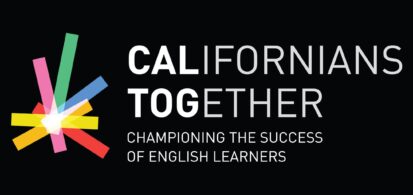The crisis created by COVID-19 has placed a magnifying glass on opportunity gaps faced by many students across California. From access to healthy meals to meeting mental health and education technology needs, communities are depending on public schools to help weather the storm. Of particular concern to Californians Together is the impact on our state’s 1.2 million English learners, multilingual families, and refugee and immigrant students. This crisis has highlighted and amplified the equity challenge to ensure that learning plans meet the needs of English learners (ELs) and their families.
Fortunately, many districts, schools, and educators are stepping up to the challenge and implementing strategies from which we can learn. In an effort to share these practices, Californians Together has been uplifting these stories through Weekly Zooms: Communities of Practice Supporting EL Teachers and Administrators, blog posts, and newsletter articles. Through Alas y Voz, resources for families are also available in Spanish.
To further support district, school, and community leaders, we also developed the following four considerations to ensure that ELs continue to have full access to the curriculum (Supporting English Learners Through Distance Learning: Considerations for District and School Leaders). The list and examples are not exhaustive but are meant to help informally assess and guide a conversation about how distance learning is being implemented in your district, school, and community.
The list is organized into four key areas essential to supporting ELs, including to:
- Provide full access to the curriculum, ensuring that designated and integrated ELD are incorporated within distance learning plans.
- Meet technology needs, providing students with devices and no cost internet access that support learning in multiple languages.
- Proactively engage parents and guardians, disseminating information and explaining assignments for their children in students’ home languages and implementing a robust plan to reach out to families; and
- Meet the needs of the whole child, ensuring that students have access to essential resources to stay safe and healthy, such as social-emotional supports and meals.
As you review this list and reflect on the progress in your school and district, it is important to continue to celebrate and build on the positive stories from your community. There is not a “one size fits all” approach to ensure that ELs are supported by distance learning, as we know that students and communities are diverse. However, we know that progress in each of the four key areas is important and must be at the forefront of every district and school strategy.
Put together with our Weekly Zooms: Communities of Practice Supporting EL Teachers and Administrators, blog posts, and newsletter articles, you will find many examples of how leaders like yourselves have tackled some of the challenges. We encourage you to share these resources to ensure that ELs continue to be a focus with our communities.
Thank you in advance for your tireless work on behalf of students across California.
